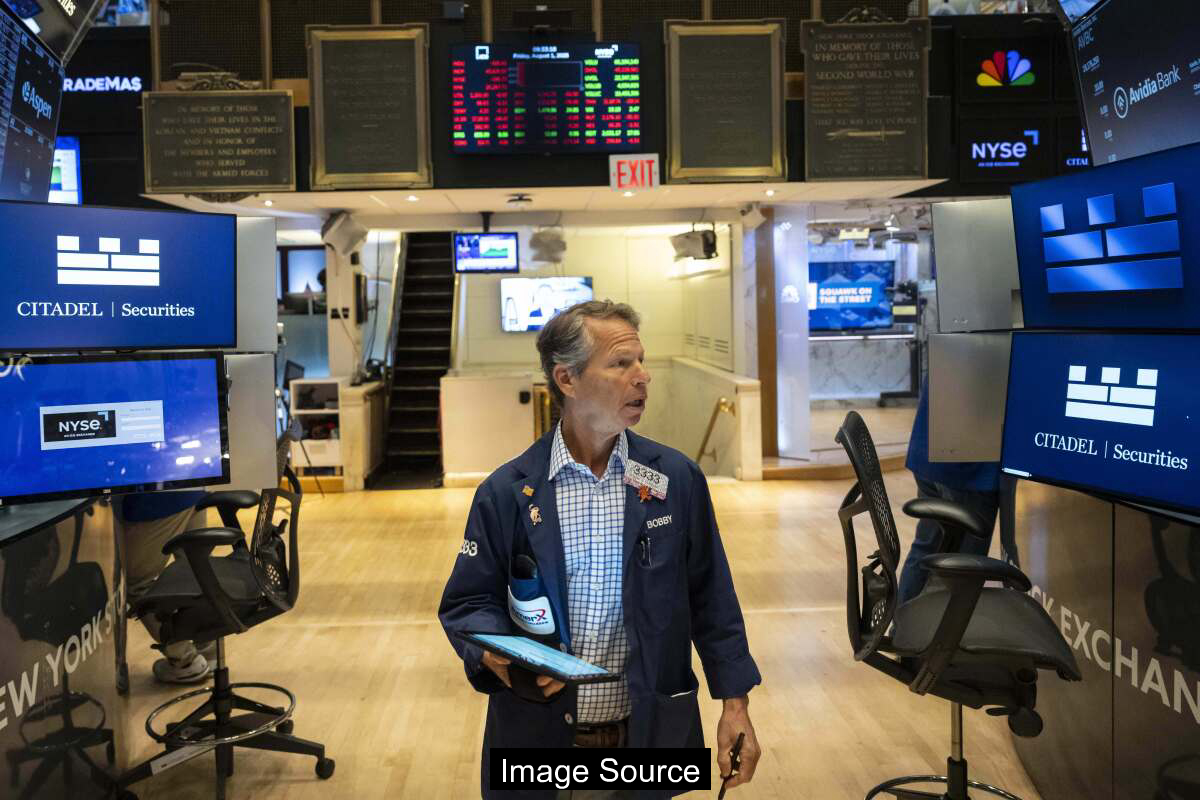U.S. stock markets rebounded sharply on Monday, with the Dow Jones Industrial Average staging a significant recovery after last week’s steep decline. The index jumped 585 points, recouping most of the losses experienced in Friday’s trading session, as investors responded positively to emerging economic indicators and corporate earnings reports.

Market Snapshot: A Day of Recovery
U.S. stock markets staged a robust recovery on Monday, rebounding from the previous week’s sharp losses. The Standard & Poor’s 500 surged 1.5%, reclaiming much of its recent ground after experiencing its worst day since May. The Dow Jones Industrial Average climbed 585 points, while the Nasdaq composite leaped 2%, signaling renewed investor confidence.
Several key companies drove the market’s positive momentum. Idexx Laboratories emerged as a standout performer, soaring 27.5% after reporting stronger-than-expected spring profits and raising its full-year forecast. Tyson Foods also contributed to the upbeat sentiment, delivering a bigger-than-anticipated quarterly profit and rising 2.4%.
The market’s resilience came despite a nearly 3% loss for Berkshire Hathaway, which reported a profit decline partly due to falling valuations in its Kraft Heinz investment. Investors remained focused on broader market dynamics and potential economic shifts.
Economic Indicators and Challenges
Recent economic indicators have raised significant concerns about the current business landscape. Last month’s job growth slowed dramatically, with the unemployment rate worsening to 4.2%. These figures prompted immediate political reactions, including President Trump’s controversial decision to dismiss the official responsible for compiling the jobs report.
The Federal Reserve finds itself at a critical juncture, balancing multiple economic pressures. While there are expectations of potential interest rate cuts at the September meeting, the Fed has maintained steady rates this year. Concerns persist about how tariffs might impact inflation and household expenses.
Market analysts are closely watching these developments. The potential for Fed intervention, combined with largely positive corporate earnings reports, could provide some stabilization to a market that has recently experienced unusual volatility.
Corporate Performance Highlights
Corporate earnings reports have been mixed but generally encouraging. Companies like American Eagle Outfitters saw significant stock jumps, rising 23.6% after unexpected public commentary. Wayfair also performed strongly, reporting accelerating growth and profits that exceeded analyst expectations.
Technology and industrial sectors showed varied performance. Tesla rose 2.2% after awarding CEO Elon Musk a substantial stock grant, potentially addressing leadership retention concerns. CommScope made headlines by agreeing to sell its connectivity business to Amphenol for $10.5 billion.
Not all companies experienced positive momentum. On Semiconductor, for instance, only matched analyst profit expectations and reported cautious observations about market stabilization in automotive and industrial sectors.
Market Questions & Insights
Q1. What factors are currently influencing stock market performance?
A1. Key drivers include corporate earnings, potential Federal Reserve interest rate decisions, global trade tensions, and macroeconomic indicators like employment data.
Q2. How are international markets responding to current economic conditions?
A2. Global markets show mixed responses, with many European and Asian indexes rising, though individual country performances vary. South Korea’s Kospi and France’s CAC 40 saw modest gains, while Japan’s Nikkei 225 experienced a decline.
Investors continue to navigate a complex landscape of economic uncertainties, corporate performances, and potential policy shifts that could significantly impact market dynamics.
Future Outlook
The upcoming week promises continued market scrutiny, with earnings reports expected from major corporations like Walt Disney, McDonald’s, and Caterpillar. These reports could provide further insights into broader economic trends and sector-specific performance.
Treasury yields have shown sensitivity to current economic discussions, with the 10-year Treasury yield slipping to 4.19% from 4.23%. Such movements reflect ongoing investor sentiment and expectations about monetary policy.
Market experts remain cautiously optimistic, suggesting that potential Federal Reserve rate cuts and generally positive corporate earnings could help stabilize and potentially boost market performance in the near term.
Strategic Pointers
Investors should maintain a diversified portfolio strategy, considering the current economic volatility. Monitoring corporate earnings, Federal Reserve communications, and global economic indicators will be crucial for making informed investment decisions.
The market’s recent recovery demonstrates its resilience, but underlying economic challenges persist. Careful analysis and a balanced approach will be key to navigating potential market fluctuations.
While short-term market movements can be unpredictable, long-term investment strategies focused on fundamental economic health and corporate performance remain the most reliable approach to wealth management.
※ This article summarizes publicly available reporting and is provided for general information only. It is not legal, medical, or investment advice. Please consult a qualified professional for decisions.
Source: latimes.com